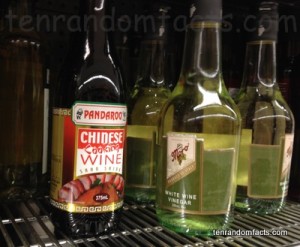Versatile vinegar!
- Vinegar is an acidic liquid made of water and acetic acid, which has the chemical formula C2H4O2.
- Vinegar is made by allowing wine, juice or cider to sit exposed to oxygen and aerobic bacteria, and the process can take many months or years, depending on the circumstances, although quick methods can result in the final product in three days.
- Among the first discoverers of vinegar were the Babylonians in the Middle East, who are said to have used it before or about 5000 BC for its preserving, cleaning and perceived medicinal properties.
- Vinegar can be made from a variety of substances, including but not limited to barley, rice, palm fruits including coconuts and dates, grapes and apples.
- In the food industry, vinegar is used to add flavour or as a liquid base, and it is frequently used in condiments like salad dressings, is found in some drinks, is used for pickling particular vegetables, and is sometimes sprinkled onto potato chips or other vegetables.
- Vinegar has been used throughout history to treat ulcers, coughs, fevers, and bacteria, and as a neutraliser for certain jellyfish stings.
- The acidic nature of vinegar is enough to cause teeth to decay, and remove sticky residue, among other substances, and is often used in conjunction with water to clean items, and the product is also able to kill mould.
- Vinegar can be used to kill weeds, although a stronger dose may be required to completely destroy some plants, and the liquid can be used for various other purposes in the garden including killing or deterring pests including snails, slugs and ants.
- Vinegar can vary in colour, and can be brown, deep red, black, yellow or colourless, depending on its origins.
- There are various methods of producing commercial vinegar, and some produce more acetic acid than others, while bottles of the liquid commonly found in supermarkets usually contain up to 5% of the acid.
Bibliography:
Know how vinegar came into existence, n.d, The Human Touch of Chemistry, http://humantouchofchemistry.com/know-how-vinegar-came-into-existence.htm
Vinegar, 2015, How Products Are Made, http://www.madehow.com/Volume-7/Vinegar.html
Vinegar, 2015, Wikipedia, http://en.wikipedia.org/wiki/Vinegar
Vinegar History, 2015, Apple Cider Vinegar Benefits, http://www.apple-cider-vinegar-benefits.com/vinegar-history.html







